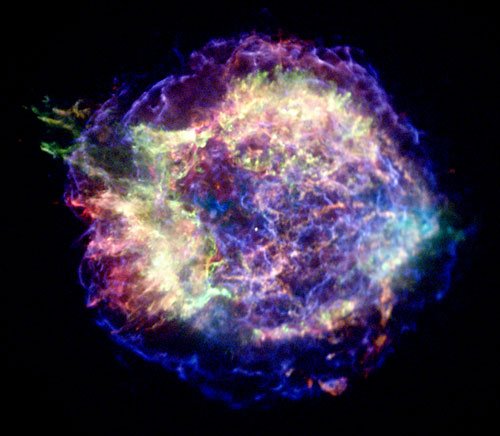Living organisms are intangible. Unlike most inanimate objects in the universe, their presence cannot be reduced to the composition of their bodies. Despite this, there is one entity in the galaxy that shares our DNA and all we are made of: stars. It's strange. Isn't that so?
The life and death cycle that these massive balls of flame that light up our universe go through is well understood. As stars are nearing the end of their lives, they rapidly absorb their own fuel, swelling and bursting as novae. When this explosion is several times bigger, it is referred to as a supernova, and it is brighter than the rest of the stars as it occurs.
"Much of the stuff that we're made of comes from dying stars," says LMSAL astrophysicist Karel Schrijver. Thousands of tonnes of stardust collide with our bodies, redefining our genes.
Like stars, the majority of our universe was once made up of hydrogen and traces of helium. We aren't made entirely of these two elements; otherwise, we'd float around like balloons. Stars are similar to nuclear reactors in that they produce heavier elements. Hydrogen was gradually transformed to helium, which was then converted to the elements that make up our bodies: carbon, nitrogen, oxygen, and sulphur.
So, how do these stars get to our planet? According to Karel, the earth's orbit is constantly colliding with debris and dust particles. Star dust reaches us in two forms: massive meteors, as it did during the dinosaur extinction, or small debris dust, which is invisible to the naked eye. However, some of them eventually settle in the earth and become a part of our system.
Karel's wife, Iris Schrijver, a professor of Pathology at Stanford, provides a metaphysical extension of the topic by discussing how this discovery was made possible while also explaining the transient essence of our life. She declares "Our physical bodies should not survive for more than a few years. Of course, this contradicts our perceptions of ourselves as we look in the mirror. But we're not at all set. We resemble a pattern or a procedure."

This goes on to clarify that our life is complex. Our bodies contain cells that die and regenerate, causing us to change in minute ways every second. Death is something that we will all face in the end, but in an odd way, we will still be protected. Not only in the memories of those who may recall us, but also in the most literal sense - as fragments of those who shone brightly in the darkest corners of galaxies, as glorious traces of stardust.
Don’t forget to upvote and subscribe for more posts. Continue to steem :-)
Nice to read your post .
Keep posting and stay with our community .
Thank you
Downvoting a post can decrease pending rewards and make it less visible. Common reasons:
Submit
I love this article but next time in your article, add the reference link as the source of this information.
Downvoting a post can decrease pending rewards and make it less visible. Common reasons:
Submit
You have been upvoted by @tarpan A Country Representative, we are voting with the Steemit Community Curator @steemcurator07 account to support the newcomers coming into steemit.
Follow @steemitblog for the latest update. You can also check out this link which provides the name of the existing community according to specialized subject
There are also various contest is going on in steemit, You just have to enter in this link and then you will find all the contest link, I hope you will also get some interest,
For general information about what is happening on Steem follow @steemitblog.
Downvoting a post can decrease pending rewards and make it less visible. Common reasons:
Submit